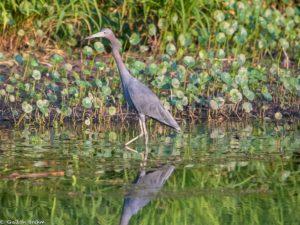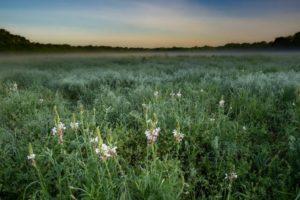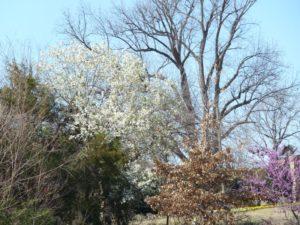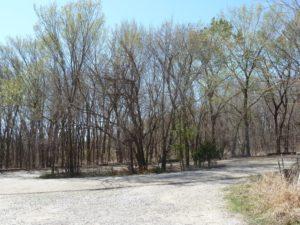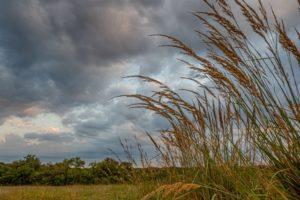Lower Meadow Wetlands (4 acres)
The shallow saddle of the Lower Meadow is dominated by plants adapted to saturated soil conditions. These wetlands resulted from very low-permeable soils, gentle topography and the input of water from overflows of Rowlett Creek and Upper Meadow runoff.
Lower Meadow Grasslands (32 acres)
Grasses and wildflowers that favor moist soil conditions grow here. This floodplain habitat along with the wetlands supports reptiles, amphibians, aquatic invertebrates, and aquatic and emergent vegetation.
Rowlett Creek and Riparian Zone (7 acres)
The forests on either side of Rowlett Creek favor moist conditions provided by this large perennial stream. This riparian zone is a very biologically diverse habitat and critical as a wildlife corridor.
Fence Rows and Wooded Islands (7 acres)
Fence-row woodlands form a natural buffer around the Meadow in areas of both wet and dry soils and along perimeter and interior fence lines established during the property’s history of agricultural use. This habitat provides important wildlife corridors and connectors between other habitat types on the property.
Upper Meadow Grasslands (22 acres)
Upland grasslands are located on the hillside above the Rowlett Creek floodplain. Here grasses and wildflowers thrive despite the drier soil and steeper slopes. Vegetation is less thick than in moist areas, but just as diverse. The past agricultural history of this portion of the Meadow is evidenced by the existing terrace system.

